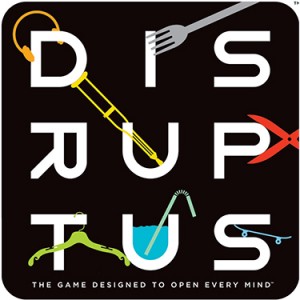 There’s an interesting new movie hitting theaters tomorrow, called Her. It sounds much like your typical romance movie, except in this case the guy falls in love with an adaptive AI. Sounds pretty boring, but where it gets interesting is as the AI evolves. Or at least, so it sounds from the very long review written up over at The Verge (go check it out if you’re interested, but be warned, it gives away a little more than the video preview below does..no big spoilers, but a lot of detail). No, it doesn’t get all Terminator-esque, it seems to remain a heart warming story throughout, but with some really interesting perspectives on AI and our future interactions with it.
There’s an interesting new movie hitting theaters tomorrow, called Her. It sounds much like your typical romance movie, except in this case the guy falls in love with an adaptive AI. Sounds pretty boring, but where it gets interesting is as the AI evolves. Or at least, so it sounds from the very long review written up over at The Verge (go check it out if you’re interested, but be warned, it gives away a little more than the video preview below does..no big spoilers, but a lot of detail). No, it doesn’t get all Terminator-esque, it seems to remain a heart warming story throughout, but with some really interesting perspectives on AI and our future interactions with it.
Here come the iBeacons
I think you’ll be hearing a lot about ‘iBeacons‘ in 2014. It’s a technology Apple introduced back in June, and is now rolling out in Apple stores across the country. Far from being an Apple-store-only feature though, there’s the potential for just about anyone to implement iBeacons in their own facility.
iBeacons are really just a way for devices to communicate using low power bluetooth signals. When you’re within range of an iBeacon, software on your iPhone will automatically recognize that and can perform an action. For example, let’s say you’re at a museum and approach a painting. Your phone can recognize that you’re now close to that painting and automatically display more information about it. A car dealer could place iBeacons in each car in the showroom, to display more information, videos even, on the shoppers’ phones. A restaurant could use an iBeacon at the entrances to inform you of the day’s specials. There are so many potential applications that the real challenge will be managing what could become information overload in urban settings!
So that’s how static or fixed iBeacons could work. What’s interesting is that Apple has put in place the hardware and software to enable most of their iPhones and iPads for the past couple years to act as iBeacons themselves. I’m not quite sure where that’ll lead, but adding this sort of intelligence to iPhones, iPads, AppleTVs, and an iWatch starts to get really exciting.
Wired magazine has more on this subject and it’s worth reading if this interests you.
Review: Disruptus
 Disruptus is a fun game that, at its most basic level, is really about brainstorming. As an engineer, I’ve already realized the benefit of brainstorming new ideas with other people, but this game helps bring that form of creativity to people who maybe don’t deal with this on a daily basis. While there are ways of keeping score when playing Disruptus, I feel the value is more about the fun and excitement that comes with thinking of new ideas, new ways of doing things. If keeping score will get people involved, great, but I just enjoy playing the game more than ‘winning’.
Disruptus is a fun game that, at its most basic level, is really about brainstorming. As an engineer, I’ve already realized the benefit of brainstorming new ideas with other people, but this game helps bring that form of creativity to people who maybe don’t deal with this on a daily basis. While there are ways of keeping score when playing Disruptus, I feel the value is more about the fun and excitement that comes with thinking of new ideas, new ways of doing things. If keeping score will get people involved, great, but I just enjoy playing the game more than ‘winning’.
The game ships with a set of cards, each with a picture of an object on them (or draw your own object or idea on one of the included blank cards). The typical way of playing this game will involve using one or two of those cards at a time for one of the following tasks:
- Create2: Take any number of elements from each card and use these to create a new object or idea. Draw cards that show a backpack and a sailboat? Make the backpack out of old sailcloth.
- Improve: Add or change one or more elements depicted on the card to improve the object or idea. The card that shows two shelves mounted to a wall? Join those two shelves together so you only need to attach one set of brackets to the wall, to simply installation.
- Transform: Use the object or idea on the card for a different purpose. Use a compass as a bathtub drain.
- Disrupt: Look at the picture, understand what the purpose is, and think of an entirely different way of accomplishing the same thing. Instead of a set of three different sizes of kitchen knives, one knife with an adjustable length blade.
When keeping score, a judge will determine whose idea wins. As the instructions say, ‘ultimately the craziest, most innovative idea should win.’ So maybe the examples I listed above aren’t going to lead me to victory, but you get the idea!
The rules seemed, to me, pretty loose and disorganized, at least compared to other games I’ve played, and I wasn’t sure how it would go. I was really surprised to find that the other adults I played it with quickly got wrapped up in the game and were having fun….it wasn’t so much about ‘winning’ or keeping score, but more just for the fun of it. Deviating from the written instructions is, I think, one of the key aspects of this game and is even encouraged by the creators. At its core though, it remains a great way of getting into that brainstorming frame of mind – whether you choose to be competitive and use the timer and scoring, or just want to have fun. Check out the video below for more details on gameplay.
I found it really easy to adapt the game to younger kids (my six year old daughter and her cousin). While camping as a group, we played this game around the campfire, with a variation of the Create2 play. Rather than taking pieces from each image or idea to make something new, the kids really liked just taking the whole idea or objects and combining them. For example, let’s say you draw cards with a watch and a stapler. The kids would say you could put a clock in a stapler so you always know what time it is at your desk. It’s pretty basic, but I think it’s a good way to get them to start visualizing new ideas and inventions, and a good stepping stone to thinking of ideas that just take *parts* of those objects to make something different. Us adults around the campfire all busted up laughing though when I drew cards with a stoplight…and a bed! A bed with a stoplight built in? I could see that being a successful Kickstarter project…
If your kids watch Phineas and Ferb, they’ll quickly latch onto this game as it’s very similar to the fantastic inventions Phineas and Ferb create in their backyard (not to mention Doofenshmirtz‘s -inators). As a quick side note – Phineas and Ferb is a great show for kids and adults and is of similar mindset as this game – be creative, think outside the box, know no boundaries, and have fun. I highly recommend that show, and you can find it on iTunes or Amazon.
Disruptus could also be a fun team building activity at work, especially if your employees don’t already engage in team brainstorming as part of their normal routine (from my experience, few companies truly do this).
You can find Disruptus at Funnybonetoys or Amazon ($24.99).
Jupiter Ascending (movie trailer)
The Wachowskis, who brought us The Matrix and Cloud Atlas, are at it again with Jupiter Ascending, set to hit the theaters in 2014. Features a man/wolf hybrid in a futurist setting, out to save a woman destined to be the universe’s next great leader. Ok, a bit over the top perhaps, but if they pull it off, it could be a fantastic move. Check out the trailer below.
Apple’s ’12 days of gifts’
Apple is launching its ‘12 days of gifts‘ app, with giveaways starting 12/26. Each day will feature some new app, book, music, movie, or who knows what, downloadable for free for 24 hours only. This is the first time they’ve done this in the US, so I have no idea what level of quality we’ll see, but I’ve been impressed by the free Christmas music they’ve given away in the past, and considering there are going to be approximately one gazillion new iPad activations on 12/25, my hunch is Apple is going to through some quality stuff out there for free to get people hooked on the App store. It’s definitely worth checking out, you can’t beat the price!
(I wish they’d just call it what it is, ’12 days of Christmas’, but oh well.)

